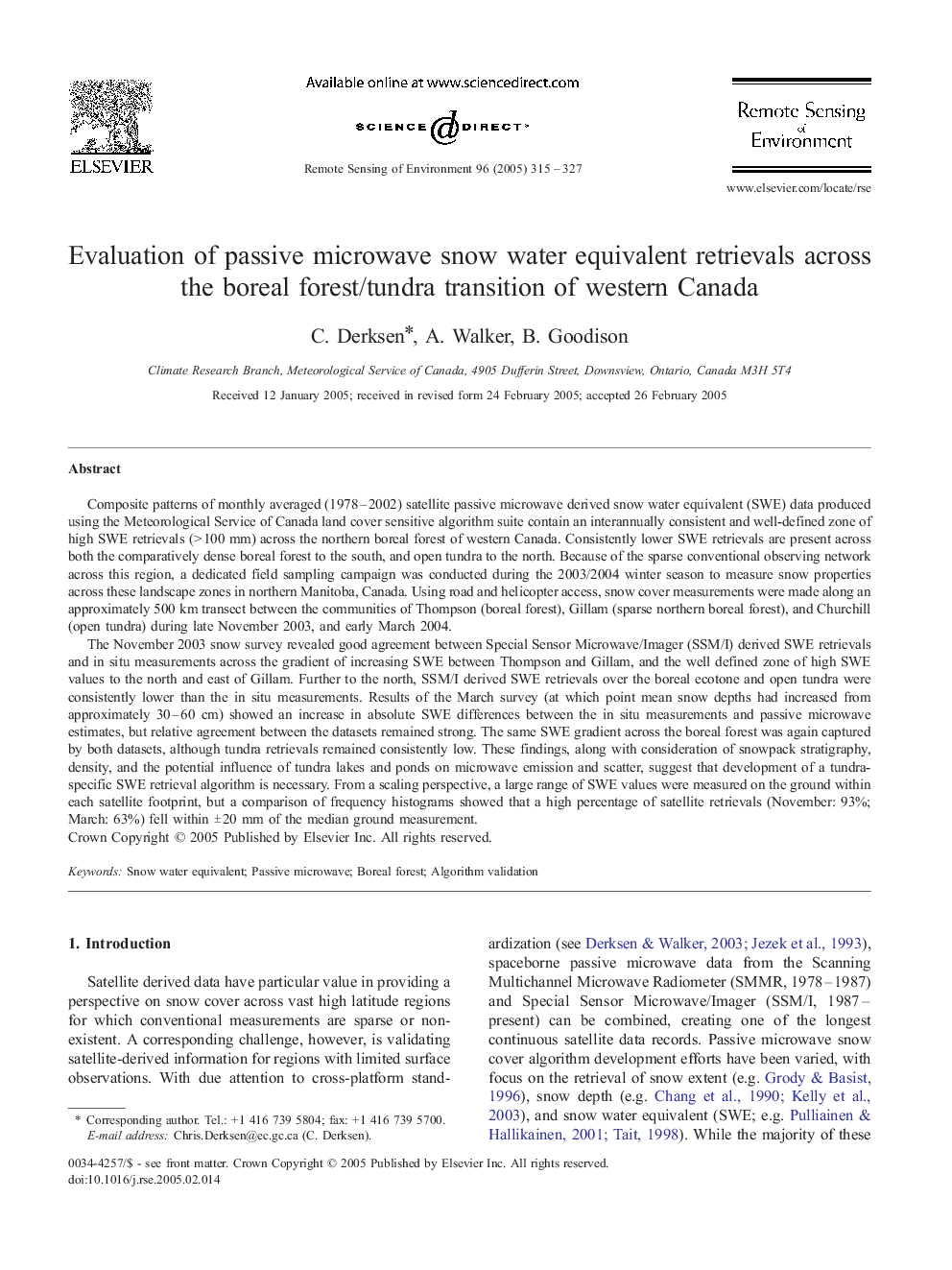| Article ID | Journal | Published Year | Pages | File Type |
|---|---|---|---|---|
| 10114190 | Remote Sensing of Environment | 2005 | 13 Pages |
Abstract
The November 2003 snow survey revealed good agreement between Special Sensor Microwave/Imager (SSM/I) derived SWE retrievals and in situ measurements across the gradient of increasing SWE between Thompson and Gillam, and the well defined zone of high SWE values to the north and east of Gillam. Further to the north, SSM/I derived SWE retrievals over the boreal ecotone and open tundra were consistently lower than the in situ measurements. Results of the March survey (at which point mean snow depths had increased from approximately 30-60 cm) showed an increase in absolute SWE differences between the in situ measurements and passive microwave estimates, but relative agreement between the datasets remained strong. The same SWE gradient across the boreal forest was again captured by both datasets, although tundra retrievals remained consistently low. These findings, along with consideration of snowpack stratigraphy, density, and the potential influence of tundra lakes and ponds on microwave emission and scatter, suggest that development of a tundra-specific SWE retrieval algorithm is necessary. From a scaling perspective, a large range of SWE values were measured on the ground within each satellite footprint, but a comparison of frequency histograms showed that a high percentage of satellite retrievals (November: 93%; March: 63%) fell within ± 20 mm of the median ground measurement.
Related Topics
Physical Sciences and Engineering
Earth and Planetary Sciences
Computers in Earth Sciences
Authors
C. Derksen, A. Walker, B. Goodison,
